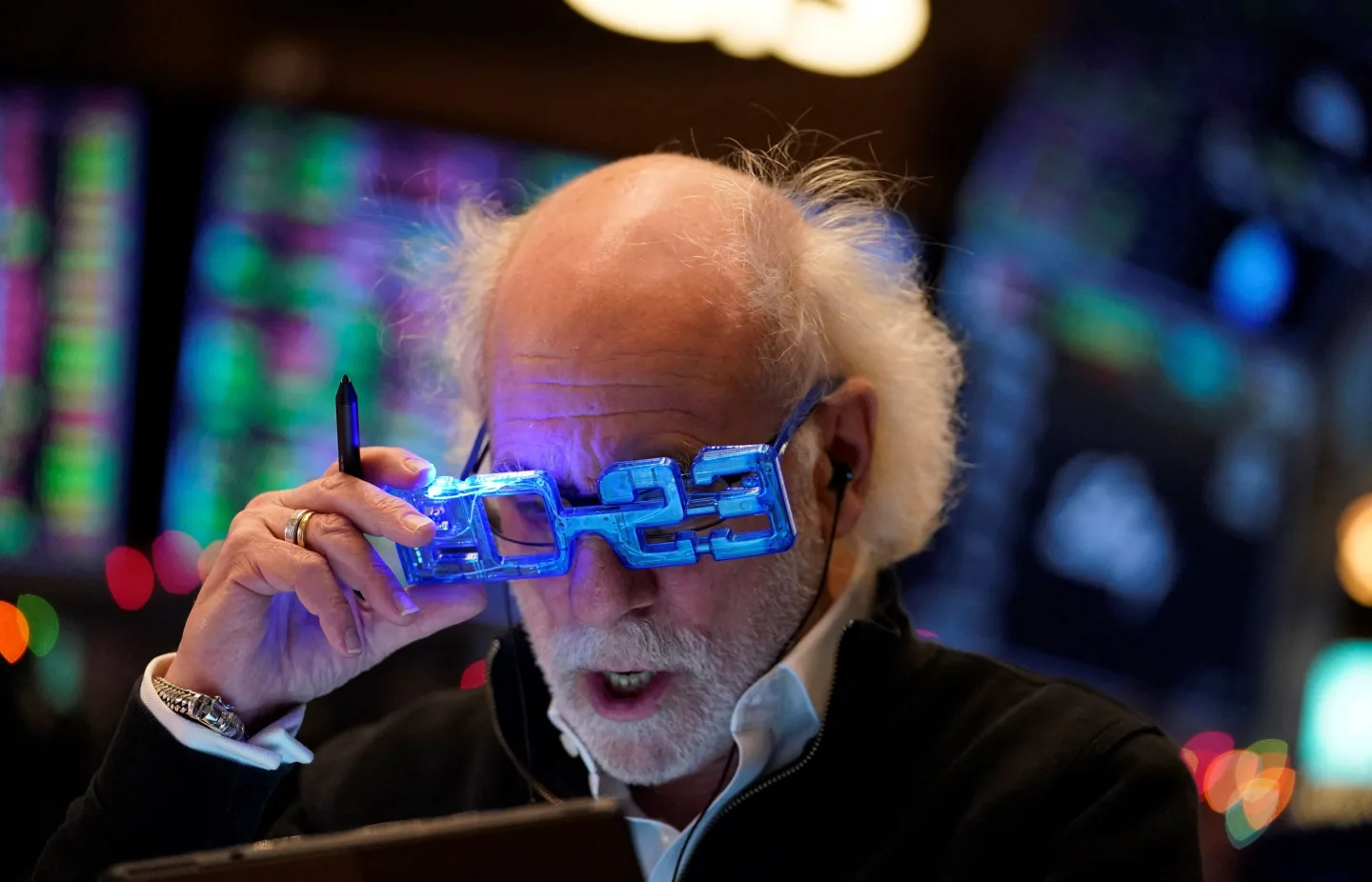It made sense at the time. Jerome Powell was waging war on inflation. The bond market was flashing dire warnings. Practically everyone saw a recession coming.
And yet fewer than 20 months after it began, the bear market that engulfed the S&P 500 is a mere 260 points from being completely erased. Rather than foretelling trouble, chart patterns tracking everything from cross-asset momentum to transportation companies are painting a picture of burgeoning economic vigor.
That some signals coming from the US economy are nowhere near as buoyant — and that Federal Reserve policy makers sound only marginally less worried about inflation now than they did then — is but a nuisance for investors who just pushed stocks up for the eighth time in 10 weeks. Should the optimism persist, last year’s bear market has a shot at being unwound faster than all but three of its predecessors since World War II.
“I’m shocked that the Fed has really pulled off the soft landing and everybody is caught underweight equity exposure,” said Dennis Davitt, co-manager of the MDP Low Volatility Fund who recently adjusted its positions to prepare for more market upside. “As people have to get right sized on their portfolio, they’re going to have to come in and buy, and every day gets harder.”
Almost $10 trillion has been restored to equity values in the past nine months as job growth, consumer spending and corporate earnings defied doomsayers. Up 27% from its October trough, the S&P 500 is now about 5% away from reclaiming its all-time high of 4,796.56 reached in January 2022.
If the index completes a round trip by September, it will make a full recovery twice as fast as the average of the previous 12 cycles, data compiled by Bloomberg shows.
What started as a rally driven almost entirely by a handful of technology megacaps has morphed into a cross-sector surge fueled by fading recession fears. From small-caps to energy and banks, economically sensitive shares are driving the latest leg up.
While skeptics keep pointing to one widely watched recession indicator — the inverted yield curve in Treasuries — as a warning that the economy is not out of woods, the equity market is telling a different story.
The latest evidence comes from synchronized breakouts in transports and industrial stocks. The Dow Jones Industrial Average climbed for 10 straight days, the longest winning streak in six years, while a similar measure tracking airline, railroad and trucking companies rose for four weeks in a row. In the process, both hit their highest levels since early last year.
According to adherents of a century-old charting technique called the Dow Theory that posits both groups are harbingers of future economic growth, simultaneous strength is a bullish sign.
“Momentum does have a habit of feeding on itself,” said Michael Shaoul, chief executive officer at Marketfield Asset Management. “Where we feel a little more comfortable is the broadening of the rally to cover most economically sensitive sectors.”
Equities are not the only asset ignoring the alarm from the yield curve. Oil has bounced back after a first-half slump, climbing back above $75 a barrel, while credit spreads slipped to a four-month low.
Whatever scary scenarios investors had in mind going into 2023, few have panned out so far. While multiple regional lenders did fail, the government rushed to ring-fence the fallout and now financial results from big banks are largely exceeding expectations. The KBW Bank Index jumped more than 6% for the best week in 14 months.
The fundamental resilience is forcing economists to rethink their recession calls while prompting Wall Street strategists to raise their year-end price targets for the S&P 500.
Reluctantly or not, bears are giving in, one by one. Computer-driven funds, which went short on stocks after the 2022 selloff, were among the first to capitulate.
From trend followers to volatility-focused funds, systematic managers snapped up a total of $280 billion of global shares in the first half alone, according to an estimate from Morgan Stanley’s sales and trading desk. This week, their net equity leverage, a measure of risk appetite, hit the highest level since early 2020.
After some initial resistance, stock-picking investors began to trim their short positions and add longs. Hedge funds tracked by Morgan Stanley’s prime brokerage unit last week saw their net leverage rising past 50% for the first time since February 2022.
“It’s a momentum-driven market. It’s difficult to call when this will stop,” said Jimmy Chang, chief investment officer at Rockefeller Global Family Office. “But it feels a little bit frothy. I still think fundamentally, at least when I look at the numbers, there are some risks.”
Chang is not alone with a persistent sense of trepidation. In the latest Bank of America Corp. survey of money managers, cash holdings rose to 5.3% from 5.1%. Meanwhile, demand for protection prompted an offering of a new exchange-traded fund that seeks to hedge against 100% of stock losses over a two-year period.
Indeed, the list of worries is long. Valuations are stretched. Inflation could be sticky and the Fed may keep interest rates higher for longer. While perhaps delayed, the threat of a recession is still lingering. And bankruptcy filings are piling up.
“Markets climb a wall of worry, and sometimes, the more issues that investors are worried about, the better the forward returns,” said Paul Hickey, a co-founder of Bespoke Investment Group. “Conversely, just when you think things can’t go wrong for the stock market, you get years like 2022. Complacency kills.”

